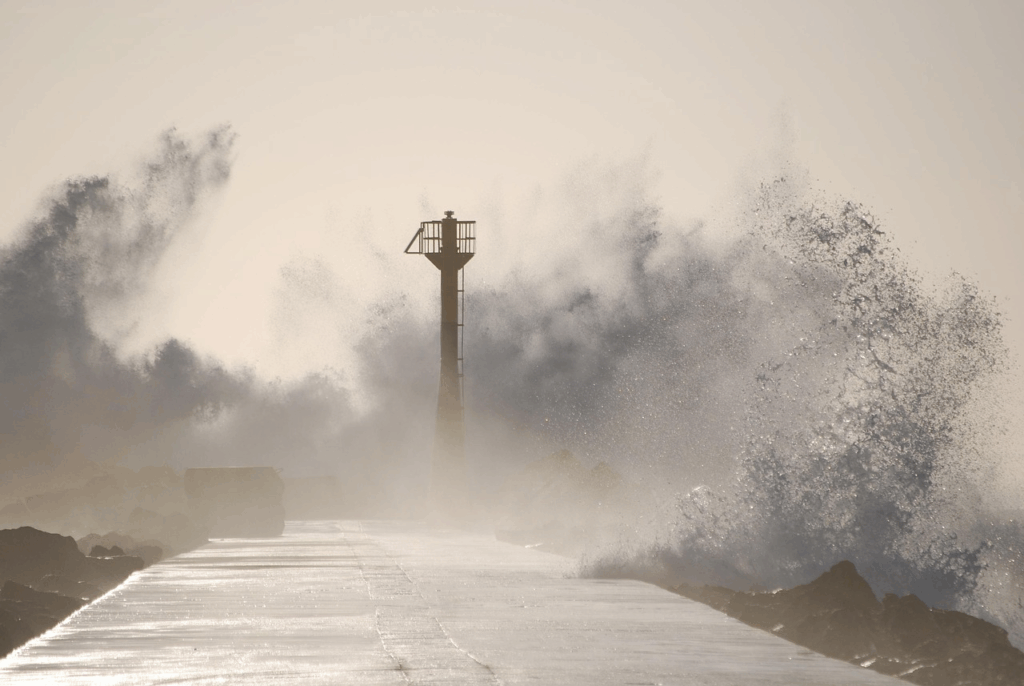How Typhoon Ragasa Exposed Supply Chain Fragility—And How to Protect Your Business

When Super Typhoon Ragasa tore through Asia in September 2025, it didn’t just bring devastating winds beyond 200 km/h—it exposed how fragile global supply chains really are.
The Devastating Typhoon Ragasa
The typhoon slammed into the Philippines, forcing closures across 29 provinces and killing 3 people. It ravaged Taiwan, where a barrier lake overflow in Hualien sent a wall of water into town, leaving 14 dead and 124 missing.
In Hong Kong, supermarket shelves were stripped bare as residents stockpiled instant noodles and bottled water. The real supply chain nightmare began when factories in Shenzhen, Zhuhai, Dongguan, and Foshan shut down completely. Up to 400,000 residents were evacuated as major ports including Shenzhen and Nansha closed entirely.
For businesses relying on these regions, operations ground to a halt. Here’s how to ensure it doesn’t happen to you.
Your 5-Step Emergency Sourcing Plan
Step 1: Map Your Risk (30 Minutes)
Ask yourself:
- Which products come from disaster-prone regions?
- How many days of inventory do you have?
- What’s your backup plan?
If >50% of any critical product comes from one region, diversify now. It’s not ‘if’ another disaster will happen—it’s ‘when.’
Step 2: Identify Alternative Regions (2 Hours)
Southeast Asia:
- Vietnam: Electronics, textiles, furniture
- Thailand: Active production alternative with established infrastructure
- Pros: Similar costs, proven capabilities
Other Regions:
- Taiwan: High-tech manufacturing
- India: Pharma, textiles, automotive
- Mexico: For US companies (USMCA benefits)
- Eastern Europe: Higher quality, closer to EU markets
Step 3: Find Suppliers Fast (4 Hours)
Digital Tools:
- Alibaba.com: Immediate capacity search
- Global Sources: Verified suppliers
- Industry associations: Member directories
- Trade show databases: Exhibitor lists
Quick Qualification Checklist:
- ✓ Financial stability check
- ✓ Production capacity available?
- ✓ Quality certifications current?
- ✓ Can they export to your market?
Important: Always verify product quality and supplier credentials before committing. Quick qualification saves costly mistakes later.
Step 4: Negotiate Emergency Terms (2 Hours)
Expect these rate increases:
- Alternative suppliers: 15-35% more
- Rush orders: 50%+ shipping premium
- Small batches: 10-25% penalty
Negotiation tactics:
- Offer longer commitments for better rates
- Consolidate orders for volume discounts
- Consider early payment for price breaks
These increases may seem steep, but they’re far cheaper than shutting down operations entirely.
Step 5: Build Long-Term Resilience
The 10-20-2 Rule:
- Allocate 10-20% of sourcing to try new options, especially emerging markets
- Don’t source more than a set percentage from a single region
- Always maintain 2+ suppliers for critical items
This isn’t just crisis management—it’s competitive advantage. While competitors scramble during the next disaster, you’ll have options ready.
Conclusion
Typhoon Ragasa was a wake-up call. The next major disruption—whether typhoon, earthquake, or geopolitical crisis—is coming. Businesses that survive and thrive will be those who’ve already built supplier diversity into their operations.
The question isn’t whether you can afford to diversify your supply chain. It’s whether you can afford not to.
At Vintage Management, we provide consultation to owners who want to seek alternative sourcing to be resilient toward crises like Typhoon Ragasa. If that’s you, contact us here.
Related Articles
Recent Posts
- Impact of Spain’s Pork Import Suspension and the Emerging Potential of Alternative Meat
- Case Study on Chatterbox’s Expansion to Japan: How Local Expertise Attracts Global Brands
- Singapore Employment Pass Update: COMPASS “20-Point” Universities for Overseas Professionals
- How Singapore’s Food-Stockpile Strategy Is Evolving
- Learn from Orchard Road Christmas Light-up







